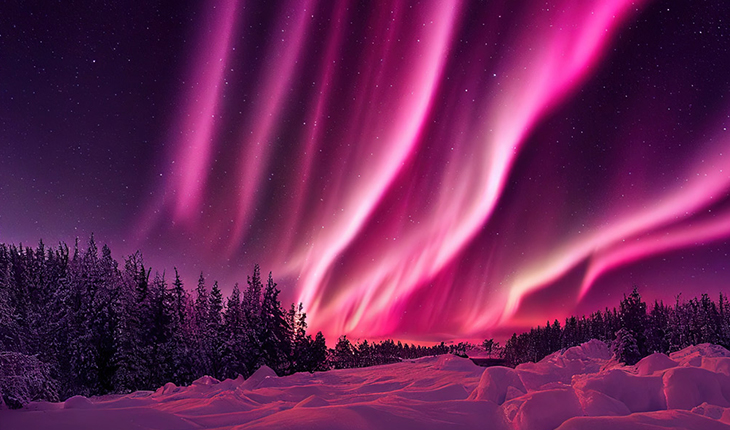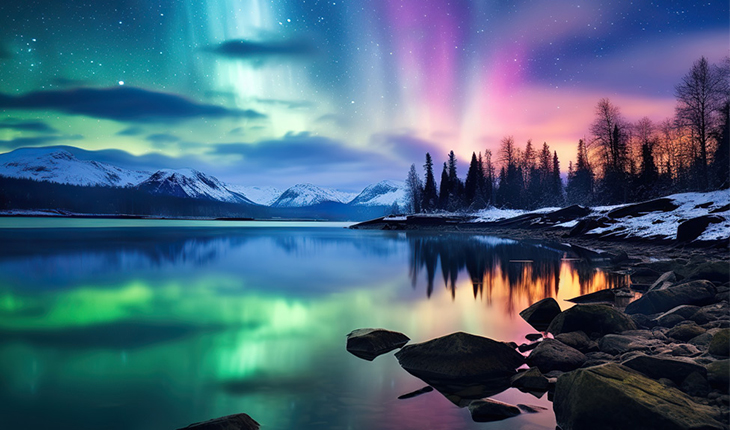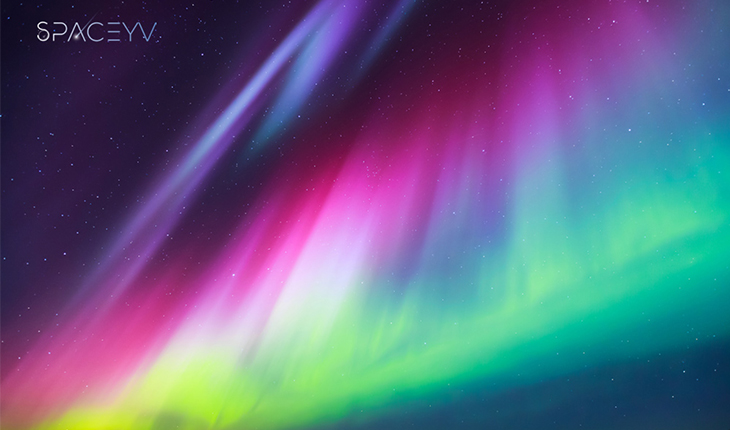In the big sky at night, nature shows us something amazing, the aurora. These beautiful lights appear in the sky, called the northern lights in the north and the southern lights in the south. They come in different colors, like green, red, blue, and sometimes purple. These colors are really pretty, and people are amazed when they see them. Looking at the different colors of the auroras is like going on a fun adventure to learn more about science, celestial wonderers and the beauty of nature.
Aurora Color Palette
The beautiful colors we see in the auroras, also known as the northern and southern lights, happen because of the sun’s charged particles bumping into gases in our air. This makes the sky light up with lots of different colors. Let me explain how these colors are created.
Green: The Mysterious Messenger
Green is the most common color in the auroras, lighting up the night sky with its spooky glow. This color comes from exciting oxygen atoms high up in our atmosphere. When particles from the sun, carried by solar wind, bump into these oxygen atoms 100 and 300 kilometers above the Earth, they give them energy. When these energized oxygen atoms calm down, they release light, making the sky green.
Red: The Dramatic Ending
We don’t see red auroras as often as green ones, but when we do, they’re breathtaking. Red auroras happen when particles crash into oxygen atoms even higher up, usually more than 300 kilometers above us. The longer journey these particles take gives them longer waves of light, which appear red to us.
Blue: The Quiet Beauty
Blue auroras aren’t as common as green or red ones but have their special charm. They happen when particles interact with nitrogen molecules in the air. When this happens higher than 100 kilometers above the Earth, nitrogen molecules soak energy from the particles and let them go as light, making the sky blue. Even though blue auroras aren’t seen as much, they bring a feeling of peacefulness to the cosmic show.
Purple Aurora: The Majestic Marvel
Purple auroras are the most uncommon and extraordinary. They happen only when there are strong geomagnetic storms. Purple auroras form when particles excite both nitrogen and oxygen molecules together. This creates a blend of blue and red light that appears purple. These special shows might not last for a long time, but they amaze us with the strong forces from space.

Aurora Colors and the Enigmatic Aurora Pink
The auroras are amazing natural light shows that have fascinated people for a long time. They come in different colors, like green, red, and blue, making the night sky look magical. But there’s one color that’s extra special aurora pink.
Pink auroras are not seen often and are mysterious. They appear occasionally with the usual colors like green and red. Unlike the other colors, scientists don’t know exactly how pink auroras happen. This makes them even more fascinating for Aurora fans and research scientists.
There are some ideas about how pink auroras might happen. One thought is that pink comes from mixing red and blue light. This mixing can occur when particles from the sun crash into molecules in our air and make them glow. Another idea is that pink might be made when particles interact with certain gases, like nitrogen, high up in the atmosphere.
Even though we’re not sure exactly how pink auroras happen, one thing is clear—they’re really beautiful. Their soft, dreamy color adds even more wonder to the amazing auroras. Seeing pink auroras in the night sky reminds us of how incredible and mysterious nature can be, making us want to learn more about it.
Read More:

Aurora colours explained
we want to talk about how different gases in the air create the colors we see in the northern and southern lights.
Oxygen:
When particles from the sun crash into oxygen atoms high up in the air, they excite those oxygen atoms. When they calm down, they release light. This makes the most common aurora colors, which are green and yellow.
Nitrogen:
Nitrogen in the air can also get excited by particles from the sun. This can make different colors depending on how high up they are and how much energy the particles have. Nitrogen can cause blue or red light, and sometimes even pink.
Neon:
Neon is less common but also plays a part in the colors we see in the aurora. When particles from the sun hit neon atoms, they can make orange light.
All of these interactions between particles from the sun and gases in our air create the beautiful colors of the auroras, making them one of nature’s most amazing sights.



